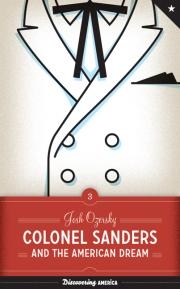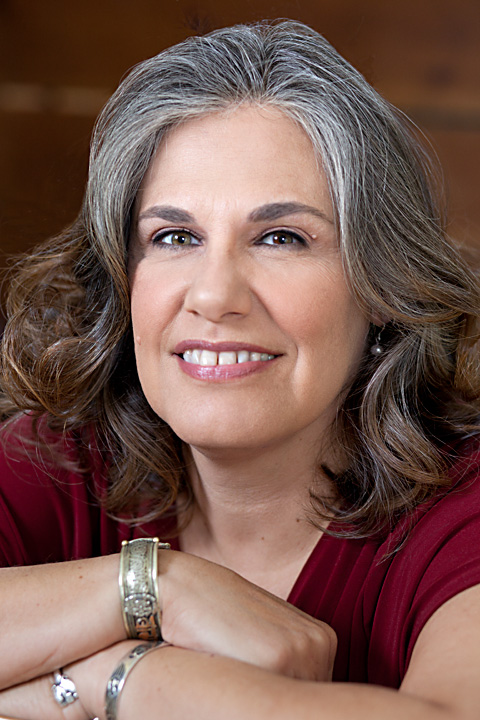
Colonel Sanders and the American Dream
by Josh Ozersky
University of Texas Press
In 1976, Colonel Harland Sanders, of Kentucky Fried Chicken fame, and Mimi Sheraton, then the doyenne food critic for the New York Times, walked into a Kentucky Fried Chicken franchise in Greenwich Village. This reads like the set-up for a joke, but the Colonel, undoubtedly in his trademark white suit and string tie, was in no mood for levity. He pronounced the food “the worst fried chicken I've ever seen” and later berated the gravy as “sludge.” The aging Colonel had chosen to sell his recipe and likeness to the first of a series of corporations five years earlier, but turning his pride and joy shoddy and sullying his hard-won reputation as the “chicken divinity” was another matter.
Witty language and unexpected moments of Americana are reasons to delight in Josh Ozersky's Colonel Sanders and the American Dream. This is the third book, after Greenback Planet: How the Dollar Conquered the World and Threatened Civilization as We Know It and Killer on the Road: Violence and the American Interstate, in the University of Texas Press’s multiauthor Discovering America Series, which presents a happily off-kilter look at “episodes in our nation's history that have never been explored.” Ozersky, a James Beard Award–winning food writer and cultural historian, savors the “American Dream” as Sanders lived it—that mythic term “coined specifically to describe a state of egalitarian opportunity . . . where a man might transcend his roots and create himself as he saw fit.”
Colonel Sanders and the American Dream is a rollicking tour of twentieth-century American history, of American, Chinese, and African yard fowl, of advertising—and a business case study in which Ozersky reminds us that by 2010 Sanders was thought by many to be a “brand symbol like Aunt Jemima, Mrs. Butterworth, and the Morton Salt Girl” and to never have been a real human being. His descriptions of the flesh-and-blood Harland Sanders amass a book within a book: eleven lexical herbs and spices describing a man who could double as a blustery scoundrel from a Twain novel. From boyhood until his death at ninety in 1980, Harland Sanders was “hot blooded,” a “showman,” a “royal pain in the ass” (a description Ozersky uses twice), and a teetotaler worried that his cussing would land him in hell.
Sanders hatched his chicken empire as an afterthought to a business he had literally fought to run and nearly lost: a gas station at a crossroads in the tiny town of Corbin, Kentucky. Feuding with the rival gas station for customers, he painted directions to his place of business on a wall by the highway, and his competitor painted over it. Sanders painted over that, and you know where this is going: a shootout, a court case, and charges dismissed. Sanders “won the right to sell gas in Corbin by a feat of arms.”
Sanders’s prior employment barely earned him a living; in a trajectory that Ozersky handles with a mixture of horror, humor, and admiration, Sanders clears brush as a teenager, which Ozersky likens to “chain gang” work, shovels mule feces as an enlisted man in the Spanish-American War, and in his mid-twenties, presents himself as an attorney at the site of a train wreck, the start of a brief career that ended in a fistfight with a client.
Running a ferryboat company in Louisville, Sanders launched the Froman M. Coots as replacement for the aging vessel The Old Asthma. (The series editors might consider a book on boat-naming practices.) The boat business was a success, although Sanders, ever restless, “passed if off as a lark” and left. In a series of attempts to chase an American Dream that continued to elude him, he pursued an acetylene lamp business that failed, followed by a litany of insurance-related, automotive-related, and boosterism sales work. Ozersky deftly correlates Sanders’s attempts to rise through the American middle class to the “portraits etched in acid by urbane writers like H. L. Mencken, John Dos Passos, and Sinclair Lewis,” satirists and denigrators of affluence and classism.
Ozersky’s done his research. Sanders’s mother, Margaret Ann, was widowed at thirty with three young children. Ozersky’s picture of rural Indiana, Sanders’s home state, in the 1890s is the stuff of American labor history. “In 1897, when Harland was seven, [Margaret Ann] . . . went to work in a local canning factory. This is the first time in the Sanders story that the family’s arc intersects with modern times.” Until Margaret Ann went to work, he writes, “nothing in the family “would have been cause for comment during James Madison’s administration” nearly a century earlier, in 1809.
Sometimes Ozersky’s affable tone turns unfortunately glib, as when he describes the era of Sanders’s childhood as “a time and place in which life was so boring that people actually stood around waiting for a train to pass.” Hyperbole like this makes a great film edit, though: if Colonel Sanders and the American Dream were a movie, that black-and-white image of bored nineteenth-century types waiting for a country train to pass would dissolve into footage of Sanders’s eponymous service station on US Highway 25 in Corbin, Kentucky, in the early 1930s, then four restaurant / gas station incarnations, finally stopping on the motel-restaurant Sanders Court and Cafe, a “gas station with some rooms attached, in a backward corner of a backward state, in the grip of the Depression.” The Sanders family ate the café food if no travelers came by, and the cash register served as the family bank.
Some of what the Sanders family ate was chicken, and “nothing represented the communal nature of rural poverty more than fried chicken.” Ozersky opens the door to the world of southern poverty for contemporary readers, noting, correctly, that the rural poor “in Kentucky and throughout the South and for that matter, the world,” lived without acres of pasture land, herds of beef cattle, and agrarian abundance.
Much is made in Colonel Sanders and the American Dream of the role fried chicken plays in the myth of the American South, without which Sanders’s own iconography wouldn’t exist. What Sanders considered the art of frying chicken came to the South through slavery, as “West African slaves . . . brought the trick with them from their lost homes.” No Kentucky Colonel in white linen did the cooking; that work was done by a housekeeper, likely a black maid.
There’s no big reveal in Ozersky’s pointing out that Sanders’ colonelcy was manufactured. The title was a “stroke of marketing genius—a guaranteed lock on the mythos of the Deep South,” particularly in the 1950s as the company, now franchising, extended its reach. The title Kentucky Colonel, established by the state’s governor in 1813 as a mark of distinction for an aide, is essentially meaningless, Ozersky writes; “as with General Tso or Sergeant Pepper, the rank is a vague honorific carried by a semifictional figure.” (The “Honorable Order of Kentucky Colonels” is now a nonprofit charitable organization.)
This doesn’t come as an indictment of Sanders but as another aspect of one man’s pursuit of the American Dream. Kentucky Fried Chicken grew from Sanders’s “nickel-a-chicken” as he franchised the business, then sold it to Heublein, the distiller, which sold it to R. J. Reynolds Industries, which later merged with Nabisco. PepsiCo’s ownership led to the 1991 name change from Kentucky Fried Chicken to KFC, when “one of the biggest brands in the world experienced . . . an identity crisis and literally attempted to erase its name.”
Sanders’s former gas-station chicken hatched a flurry of competitors in the late 1960s and early 70s, the era of both white flight and latchkey kids. Ozersky’s list of interlopers looking to cash in on the “fried-chicken craze” include All-Pro Chicken, Chicken Hut, Cock-a-Doodle of America, and the perplexing Wife Saver Chicken, a name which leads me to wonder whether the logo was a white flag or an enraged woman. Gospel singer Mahalia Jackson got into the act with her fried-chicken chain. A thirty-two-unit outfit named for the Chicken George character from Alex Haley’s smash hit Roots populated the mid-Atlantic states.
There’s a hefty paradox in the story of a poor southern white man co-opting a chicken recipe brought to America by enslaved blacks, making a fortune, and being revivified by marketers after his death as a dancing cartoon figure who showed off “his hip-hop cred,” a sales effort that Ozersky refers to as “depravity.” To his credit, Ozersky gives this cultural conundrum its due, including discussion of a Sanders-like character named Commander Cross as a Klan leader in the 1975 blaxploitation movie Darktown Strutters. The actual Harland Sanders, Ozersky points out, “seems to have been utterly without racial prejudice.” Ozersky writes that Sanders, like “all Southerners of his time,” used the word “Negro” and cites Ray Calander, head of public relations for Kentucky Fried Chicken in the early 1970s, having told him that he preferred to be called “black.” Sanders is reported to have replied, “Well, I wouldn’t call you nice folks black.”
Ozersky is above all a food writer, and like a good cook, a good food writer makes magic with the idea of a yard bird, some fat, and a flame.
When you make fried chicken, you put some shortening in the pan, or maybe some lard, or maybe both, or not, and you get it hot. You don’t know how hot because there’s no thermometer nearby, and you can’t say how high a flame because chances are you are using a wood or coal stove. . . . The fat is ready when it sizzles when the chicken goes in. You wait long enough for it to brown. How long is that? Who knows? It takes as along as it takes, and you know how long that is because you’ve it done a thousand times and watched your mother do it a thousand times before that. . . . That’s how you made fried chicken in Kentucky in 1900, when Harland Sanders started doing it, and how you do it today, at home in the South.”
A 2010 poll indicating that the youthful public was “woefully ignorant” in not knowing that Sanders had been a real person hits Ozersky in the gut. In Colonel Sanders and the American Dream he entreats callow youth to know the truth, serving up a quirky and rewarding exploration of a “very real time, place, product, and person.” I lift a drumstick with Ozersky in Sanders’s honor.


